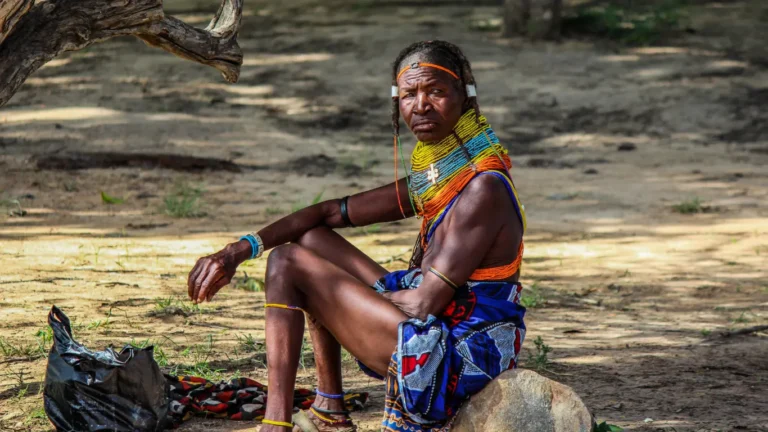In the world of body aesthetics, certain features stand out, capturing attention for their uniqueness and cultural significance. One such feature is the extreme gluteal proportions in African women. This body characteristic has recently earned recognition through awards like Unusual Award N.13, highlighting the growing appreciation for different body types, especially in African beauty standards.
This article explores the reasons behind the cultural fascination with gluteal enhancement, the historical and genetic aspects of African body types, and the rise of this beauty standard in modern culture. We will also touch on fitness, glute-focused workouts, and how these physical traits are celebrated globally today.
The Cultural Significance of Gluteal Proportions in Africa
In many African communities, body proportions, including large hips and sculpted glutes, have long been a symbol of beauty, fertility, and femininity. African women with extreme body proportions are often admired for their curvaceous figures, which represent strength, sensuality, and health.
Historically, cultures across Africa have embraced natural body transformations, with many indigenous tribes associating large buttocks with the ability to carry and care for children. In countries like Nigeria, South Africa, and Brazil (where many African-descended people live), large hips and rounded glutes are still regarded as ideal traits. These physical characteristics continue to influence modern beauty standards and are now part of global trends.
The Science Behind Gluteal Development
The fascination with gluteal proportions is not just cultural—it is also biological. The gluteus maximus, the largest muscle in the human body, plays a significant role in movement, posture, and overall body strength. Strong, well-developed glutes contribute to improved physical performance, from running and jumping to maintaining balance.
Some African women are naturally predisposed to extreme gluteal proportions due to genetic factors. These traits are passed down through generations and are often seen as symbols of optimal health and fertility. However, modern fitness regimens now allow women of all backgrounds to enhance their gluteus maximus development through glute-focused fitness programs, resulting in sculpted and toned glutes.
Fitness and Sculpting Extreme Glutes
The rise of curvy body types and the growing trend of body positivity have fueled a surge in the demand for glute-focused workouts. These fitness routines are designed to sculpt and enhance the glutes, with exercises like squats, lunges, and deadlifts being among the most effective for extreme gluteal development.
While many people associate extreme gluteal proportions with African women, it’s important to note that glute enhancement has become a global phenomenon. Women around the world, from fitness enthusiasts to those looking to reshape their bodies, are turning to glute-focused fitness routines. The desire to achieve a certain hip-to-waist ratio or to sculpt the body has created a massive fitness industry that celebrates body transformation, often influenced by the curvy African women seen in the media.
Celebrating Unusual Beauty Standards
With the growing recognition of unique body types, the Unusual Award N.13 and other accolades have become a way to celebrate those with extreme body proportions, particularly in the context of African beauty ideals. These awards highlight the cultural shift towards acceptance and appreciation of diverse body shapes.
The body positivity movement has played a crucial role in shifting global beauty standards. African women, who have long been associated with large hips and gluteal proportions, are now seen as trendsetters. Their physical characteristics challenge conventional beauty norms and encourage the embrace of uncommon body proportions. As a result, many women today are empowered to celebrate their natural bodies, whether they have extreme proportions or more modest shapes.
The Influence of African Women on Global Beauty Trends
The portrayal of curvy African women in media has had a profound impact on global beauty standards. The visibility of these women in fashion, music, and entertainment has inspired a worldwide fascination with extreme body proportions. Fitness models and celebrities who embrace their gluteal proportions have become role models for women everywhere, encouraging others to embrace their bodies and pursue fitness goals that enhance their physical appearance.
African beauty, particularly in its emphasis on body symmetry and glute-focused aesthetics, has led to the rise of international fashion icons like Beyoncé, Nicki Minaj, and Kim Kardashian, who have all helped to mainstream the large hips and sculpted glutes trend. As a result, women are now more confident in embracing their natural body shapes, and this celebration of extreme proportions has helped redefine what is considered beautiful.
Addressing Common Questions
Are extreme gluteal proportions unique to African women?
While African women are often celebrated for their extreme body proportions, this trait is not exclusive to them. People from different ethnic backgrounds can also have naturally large glutes, especially if they engage in glute-focused fitness routines. The trend of enhancing gluteus maximus muscles through exercise has become popular worldwide.
Can you achieve extreme gluteal proportions through fitness?
Yes, through glute-focused workouts like squats, lunges, and hip thrusts, individuals can sculpt their glutes to achieve more extreme proportions. Many people work with fitness experts to tailor their routines for optimal results. Glute enhancement is a fitness goal that anyone, regardless of background, can pursue.
How do genetics influence gluteal proportions?
Genetics play a significant role in determining body shape and gluteal proportions. Some people are genetically predisposed to larger hips and rounded buttocks, but lifestyle factors like diet and fitness also affect the size and shape of these areas.
Why are extreme gluteal proportions celebrated in African culture?
In many African cultures, large buttocks and wide hips are seen as signs of fertility, femininity, and good health. These traits have been celebrated for centuries, with some cultures using body modification techniques to enhance these features. The appreciation for these proportions has continued into modern times, influencing beauty standards globally.
Conclusion
The extreme gluteal proportions in African women have a long history of cultural significance, and they continue to influence modern beauty standards. Whether natural or enhanced through fitness, these unique body features are celebrated worldwide. Awards like Unusual Award N.13 serve as a testament to the growing appreciation of curvy body types and extreme body proportions.
As society continues to embrace diverse body shapes and sizes, it is important to remember that beauty comes in many forms. African women with sculpted glutes and large hips have not only shaped beauty standards but have also helped redefine global concepts of femininity and fitness. The growing popularity of glute-focused workouts and the acceptance of extreme proportions in popular culture demonstrate that beauty is as diverse as the women who embody it.

